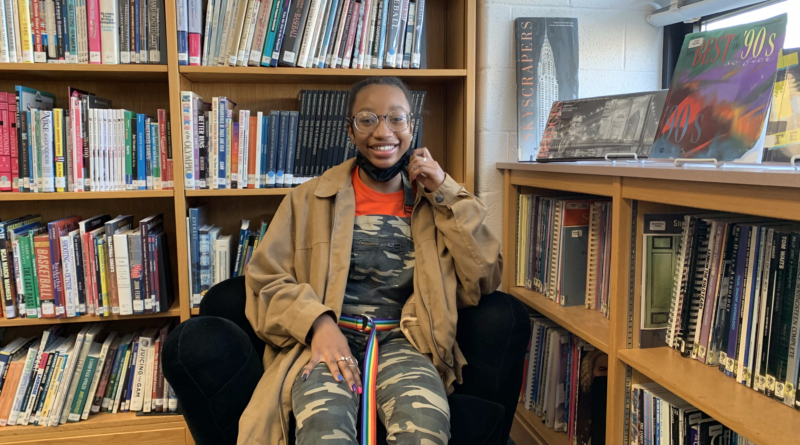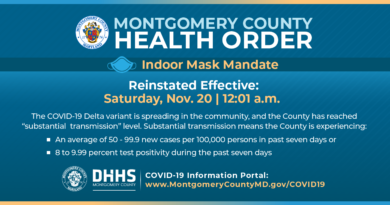Walking Through Dual Enrollment with Zoe Strong
A lesser known path of high school comes in the form of Montgomery College’s dual enrollment program. A small number of juniors or seniors register to be part-time college students while simultaneously attending their MCPS high school, with less than seven MCPS classes each day. Dual enrollment is a way for students to graduate high school with college credits and experience, without taking AP classes.
One of Blake’s dual enrollment students is senior Zoe Strong, who is taking English and American Sign Language. This year, she’s taking all virtual classes, with a half-day schedule at Blake.
Most people are completely unaware of the dual enrollment program, but a few students get an email if their school thinks they are qualified to participate in dual enrollment. An excerpt from the email sent by the Supervisor for Career and Postsecondary Partnerships, Genevieve Floyd, says, “Congratulations! Your student has met the college-ready grade point average requirement to take a college course and may earn college credit while still in high school through a partnership between Montgomery County Public Schools (MCPS) and Montgomery College (MC). High school students who enroll and take a college course at MC or any Maryland public college or university are able to do so at a reduced cost.” Email notifications and physical mail are the main ways students find out about dual enrollment.
Strong found out about dual enrollment from her sister, who had participated in the program a few years back. “She’s a couple years older than me, so she did it, and I heard about it,” she comments. “I was like ‘Oh, half day schedule you say. I’m intrigued.’ The school does announcements about it too, but I learned about it from family.”
Although she enjoys her current schedule, the process to get there was difficult. Similarly to other dual enrollment students, registration took a lot of time and effort. “It sucked. There was no direction, I didn’t get any help,” Strong complains. “So I had to call a woman personally, and she had to walk me through it step-by-step. It was—it was not good.”
Managing both high school and college classes is not a task everyone can do, but Strong handles the work with grace. “It’s a lot easier than I thought it would be,” she expresses. “Obviously, there’s like, time management, because there’s no bells to get to class. You have to remember what time the classes start. So college classes are a lot more independent than high school classes. It takes a lot more self—not awareness, but like, ‘This is on me.’ I like the balance between high school classes and college classes.”
“I feel like college classes are a lot less like, you don’t get reminded about work. It’s like, ‘Here’s your homework, do it by this date.’ You never hear about it again,” Strong says. “One of my classes is actually an evening class, and it’s two hours and thirty minutes, so it’s very tiring and you have to stay focused. The tests and the homework, it’s very independent, but it’s weekly: the same amount of homework every week and then you do the tests on your own. And also, there’s windows—it opens on Tuesday and closes Wednesday, so do it whenever you get the time.” College classes and high school classes are very different, and it takes someone who is very self-sufficient and motivated to keep up with all of the homework and tests.
Although this is a more direct way of getting college credit, the better known option is participating in AP classes, and taking AP tests at the end of the year. In comparison to AP classes, Strong doesn’t see too much of a difference in difficulty, especially between AP English and college English classes. But, she believes that it’s much easier to get college credits through dual enrollment.
“I’m taking an English class online for the first semester, and that counts for a whole school year, versus AP classes you have to take the whole year,” Strong states. “I have to write essays, but they’re all longer essays. For my English class, you have to write an essay a week. There’s less work, but it’s more detailed. But it’s also a shorter class.”
Some may think AP credits are the better option, as it’s guaranteed that a college will accept the credit. But with community college credits, it’s really easy to check which colleges accept the credit, and you can get the credit by doing well in the class rather than doing well on an exam at the end of the year.
A majority of Blake students that are in the dual enrollment program take their classes on campus, but Strong prefers the online classes for a number of reasons.
“It’s very flexible, because I can do it in here [the library], or in my car, or I can be in my bed with a hoodie on. I like that part,” she says. “Even if I did have my actual license, I don’t have a car to drive me there. It just worked out, because now almost all the classes are online, but if we were in-person completely, there would probably be less access to online classes.”
Strong recommends rising juniors and seniors to look into dual enrollment, and try to participate in the program if you’re interested. She especially suggests for seniors who only need a few high school credits to look into dual enrollment, and the possibility of getting a half-day schedule like herself.
“There are a surprising amount of people who didn’t know about it,” she comments. “But I think it would benefit a lot of kids here. And if more people did it, there would be more transportation to get there.”
Even if you aren’t specifically notified about the dual enrollment program by the school, if you’re interested in it, you can visit Montgomery College’s website, or talk to Mr. Marshall and your counselors to learn more about how dual enrollment could work for you.




